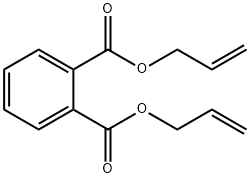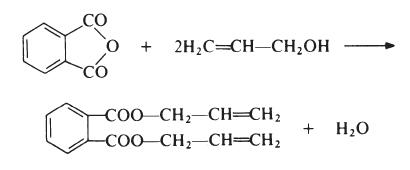
Diallylphthalat
Bezeichnung:Diallylphthalat
CAS-Nr131-17-9
Englisch Name:Diallyl phthalate
CBNumberCB0246486
SummenformelC14H14O4
Molgewicht246.26
MOL-Datei131-17-9.mol
Synonyma
Diallylphthalat
o-Phthals?urediallylester
1,2-Benzoldicarbons?uredi-2-propenylester
Diallylphthalat physikalisch-chemischer Eigenschaften
| Schmelzpunkt | -70 °C |
| Siedepunkt | 165-167 °C/5 mmHg (lit.) |
| Dichte | 1.121 g/mL at 25 °C (lit.) |
| Dampfdichte | 8.3 (vs air) |
| Dampfdruck | 2.3 mm Hg ( 150 °C) |
| Brechungsindex | n |
| Flammpunkt | >230 °F |
| storage temp. | Inert atmosphere,2-8°C |
| Löslichkeit | 0.18g/l |
| Aggregatzustand | Liquid |
| Farbe | Clear colorless to light yellow |
| Geruch (Odor) | mild odor |
| Wasserlöslichkeit | 6 g/L (20 ºC) |
| BRN | 1880877 |
| InChIKey | QUDWYFHPNIMBFC-UHFFFAOYSA-N |
| LogP | 3.23 at 20℃ |
| CAS Datenbank | 131-17-9(CAS DataBase Reference) |
| NIST chemische Informationen | 1,2-Benzenedicarboxylic acid, di-2-propenyl ester(131-17-9) |
| Kennzeichnung gefährlicher | Xn,N |
| R-Sätze: | 22-50/53 |
| S-Sätze: | 24/25-60-61 |
| RIDADR | UN 3082 9/PG 3 |
| WGK Germany | 2 |
| RTECS-Nr. | CZ4200000 |
| F | 19 |
| Selbstentzündungstemperatur | 725 °F |
| TSCA | Yes |
| HazardClass | 9 |
| PackingGroup | III |
| HS Code | 29173400 |
| Giftige Stoffe Daten | 131-17-9(Hazardous Substances Data) |



